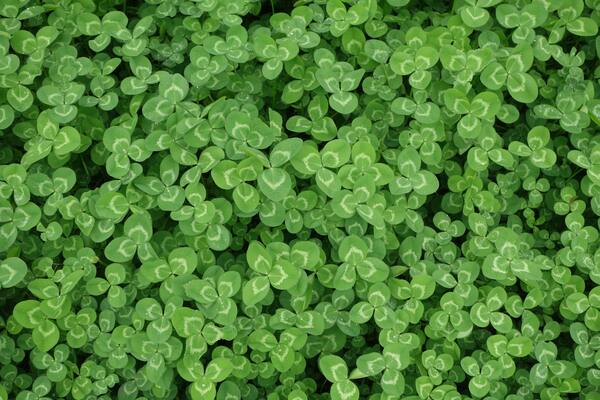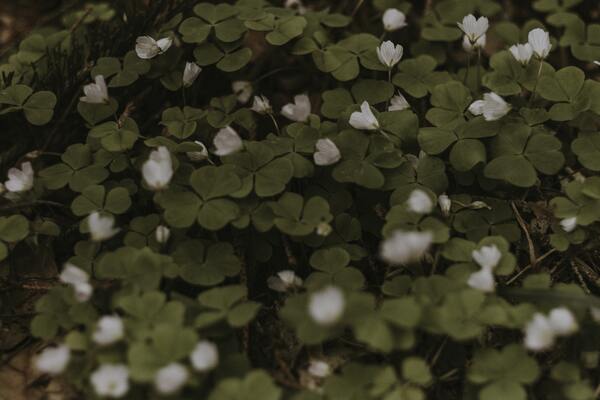Yellow wood sorrel and clover are frequently confused with one another because they have similar appearances at specific times of the year. Contrary to yellow wood sorrel, which is a troublesome weed, clover is frequently regarded as a helpful nitrogen-fixing plant. Which one do you have in your garden, and what makes them different from one another?
Wood Sorrel
North America is thought to be the original home of this plant. Its scientific name is Oxalis stricta, but it’s also commonly known as wood sorrel or common yellow Here are a few tidbits about yellow wood sorrel, Oxalis.
- Perennial or annual: Perennial
- Height: Up to one foot
- Bloom time: March to October
- Toxic: Although all parts are edible, eating them in large quantities can be dangerous if you have certain medical conditions.
- Growth rate: Prolific
While yellow wood sorrel produces lovely flowers, it is generally unwelcome in gardens. The plant’s seed pods disperse widely, allowing it to quickly engulf lawns and garden beds.
If consumed in large quantities, it is toxic as well. The Greek word oxys, which means “sour,” is where the plant’s genus name, Oxalis, comes from.” It’s crucial to eat it sparingly and keep animals from over-foraging on it because it can upset the stomach of both humans and animals if consumed in large quantities.
Clover
Because they have comparable leaf structures, clover and yellow wood sorrel are frequently mistaken for each other. But clover is an entirely different kind of plant. The two main kinds of clover are white (Trifolium repens) and red (Trifolium pratense). These names are derived from the hue of the plant’s flowers. These are some clover-related facts.
- Perennial or annual: Perennial
- Height: Up to one foot
- Bloom time: May to October
- Toxic: White clover in warm climates may be mildly toxic
- Growth rate: Prolific
According to The University of Georgia Extension, clover is considered a nitrogen-fixing plant. As a result, the soil becomes more fertile because the plant helps make atmospheric nitrogen available to it. Clover is a great companion plant for grasses and other nitrogen-loving plants because it benefits nearby plants as a result of this trait.
Clovr is an excellent forage for animals as well. Only the leaves and flowers are consumed by animals, which minimizes damage to the plants and speeds up regrowth. Animals prefer the sweet flavor of clover, so they will consume less toxic plants. It can also deter animals from eating other toxic grasses.
How To Distinguish Wood Sorrel And Clover
Leaves And Stalk
Similar to clover, the leaves are arranged in groups of three and are heart-shaped rather than oval. Triangular-looking leaves can be found on some ornamental wood sorrels. The longest and juiciest part of the plant, the stalks can be quite long.
Flowers, Fruit And Seeds
Five petals are fused together at the base of the wood sorrel flower to form a cup. They can range in size from a few microns to two centimeters. Despite most often being yellow, petals can also be white, pink, or purple. The fruit has many small seeds.
Roots
There are two types of roots: branched and fibrous or tuberous and succulent. Several species have roots that resemble little onions and have tiny bulbils (baby bulbs that are attached to the main bulb) that they can use to reproduce. When the soil is disturbed, these bulbils separate from the parent plant.
Potential Benefits Of Yellow Wood Sorrel
We should be aware of some potential advantages of Yellow Wood Sorrel even though many gardeners would consider it a problematic plant.
You can eat small amounts of the entire yellow wood sorrel plant. It is frequently used to make tea or added to salads and soups. However, if a person has kidney issues or certain joint inflammation issues, they shouldn’t consume yellow wood sorrel.
When used sparingly, the oxalic acid present in yellow wood sorrel has medicinal benefits and is frequently used for fevers, urinary tract infections, and a variety of other ailments. Oxalic acid is toxic if consumed in large quantities.

Benefits Of Growing Clover
Most gardeners will benefit from clover’s long list of advantages. I’ll list a few of this wonderful plant’s most popular applications below.
- Livestock feed
- Ground cover for moisture retention
- Living mulch for weed suppression
- Nitrogen fixer for soil
- Food for pollinators
- Great companion plant for many other plants
- Chop and drop fertilizer
- Edible in small quantities
- Considered a medicinal plant
Determining If You Have Yellow Wood Sorrel Or Clover
When determining which plant you have in the spring or summer, looking at the flowers is the simplest method. You have clover if they are red, white, and bushy. Yellow wood sorrel is present if the delicate yellow or orange flowers are present.
Even if the plants aren’t in bloom, you can still tell which ones are in your yard. Check the leaves to see if they are heart-shaped or rounded off. While the leaves of the clover are more rounded, those of yellow wood sorrel will have distinctly heart-shaped leaves.
Tips For Removing Yellow Wood Sorrel From Your Yard
Early action is essential if you want to get rid of yellow wood sorrel from your yard. The following year, this plant will return even more robustly after it sets its seed. You’ll be able to make some progress toward eliminating the plant if you can pull it—along with its roots—out early in the growing season before it blooms.
If you manage to pull yellow wood sorrel before it flowers, you can turn it into the soil by putting it in your compost pile. It’s crucial to only do this with plants that haven’t yet produced seeds in order to prevent the plant from sprouting in the composted soil.
Tips For Removing Clover From Your Yard
While clover can be a useful component of a yard garden, there are times when you might want to get rid of it, such as if you have horses and are concerned that the clover might make them sick. Pulling clover by hand is an excellent way to get rid of it, just like with yellow wood sorrel.
You can deprive clover of oxygen and sunlight if there is too much of it for you to realistically remove by hand. Cover your clover patches with cardboard, wood, or plastic sheeting in the autumn. To prevent it from blowing away in the wind, secure this covering properly. The clover will not survive the following summer.

